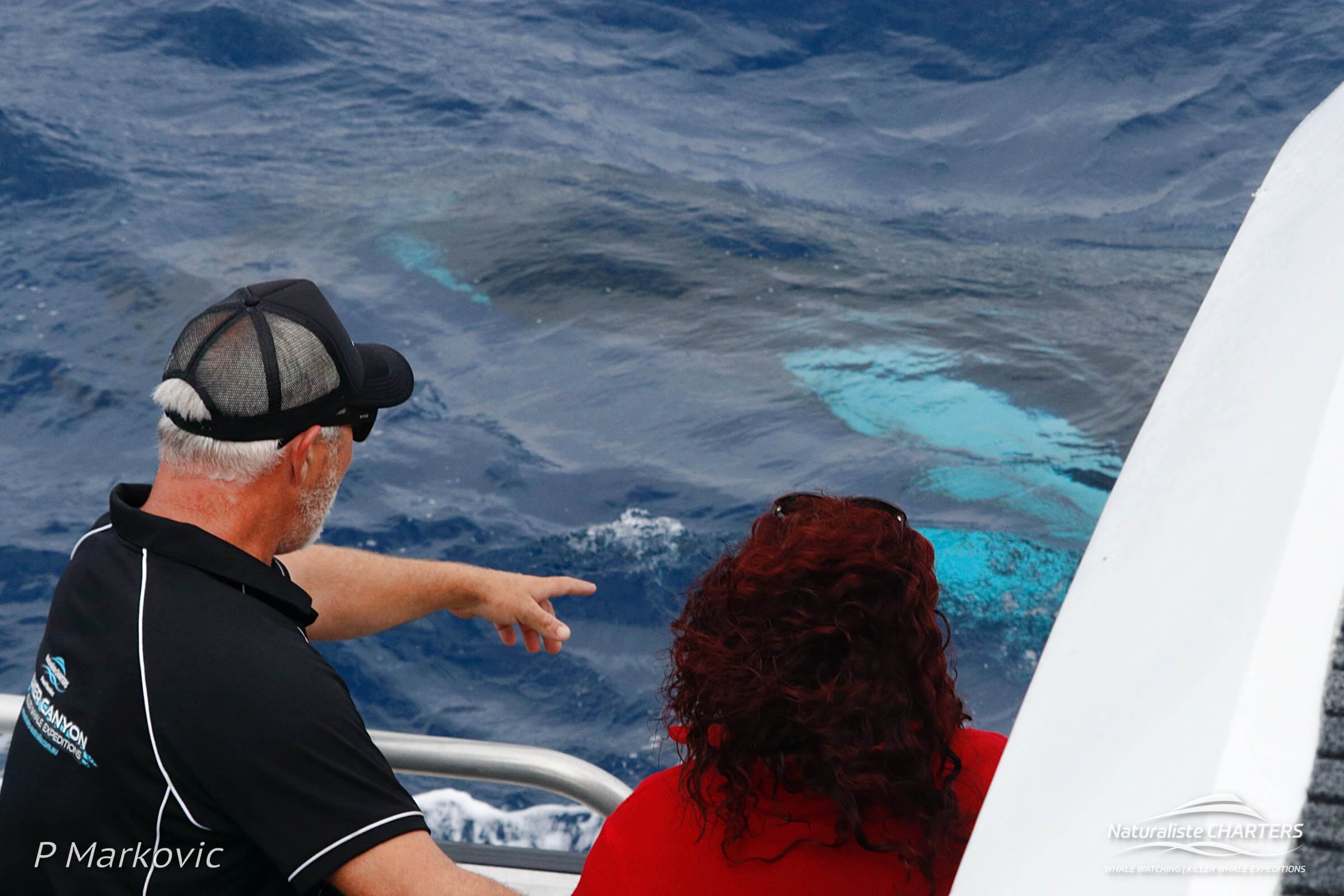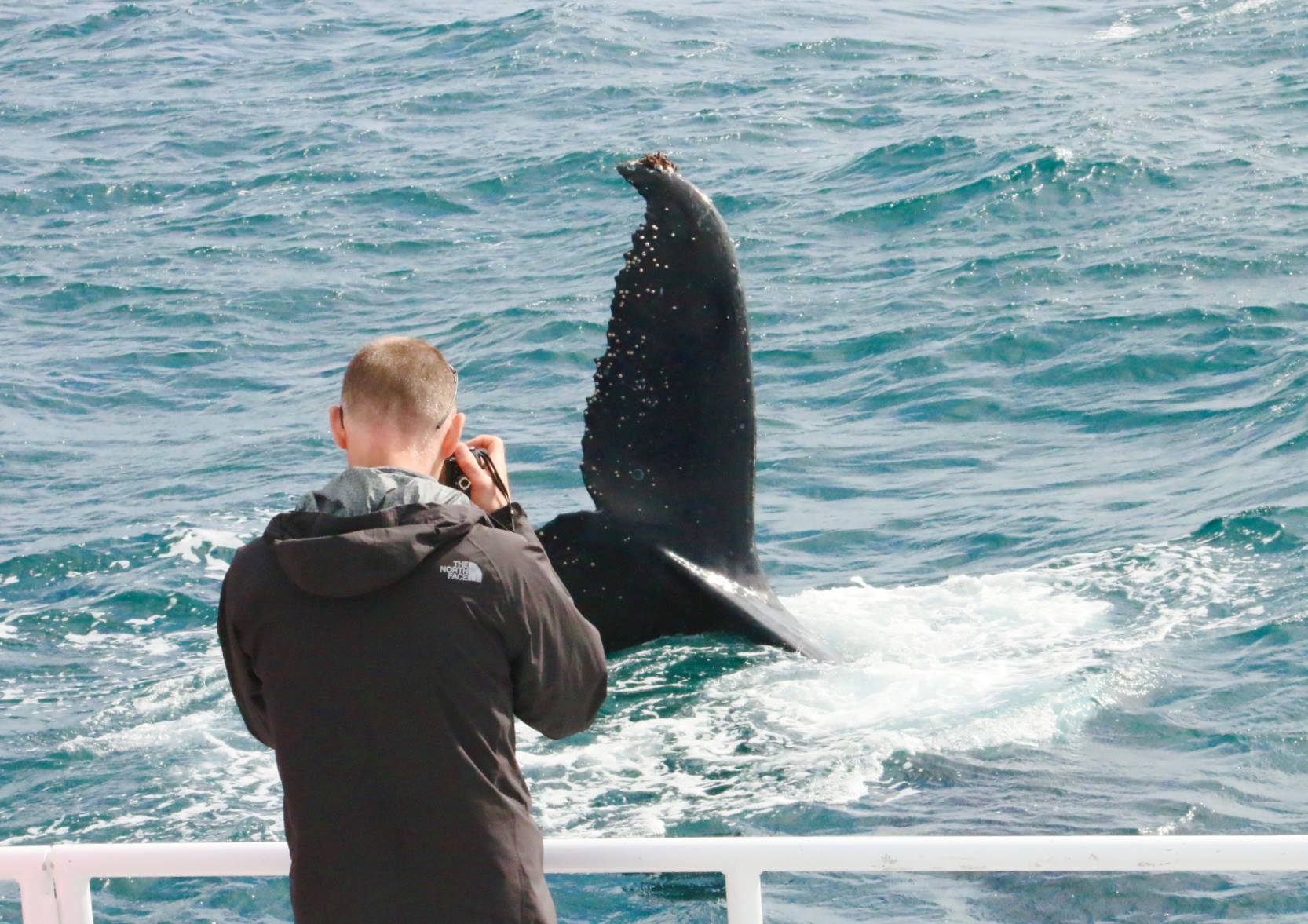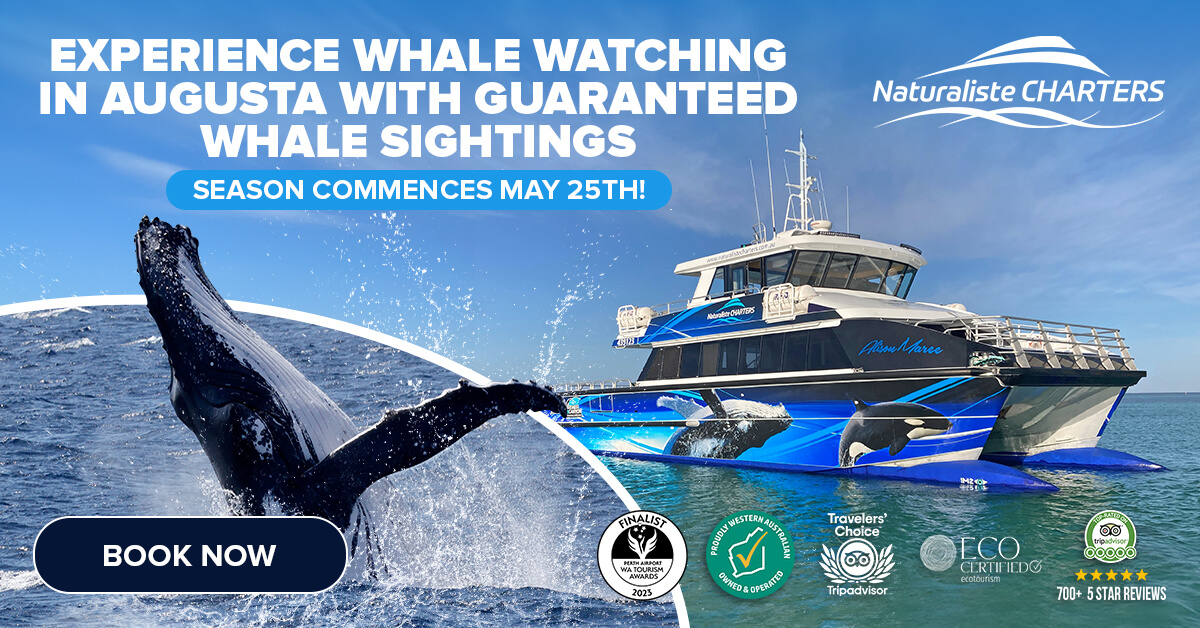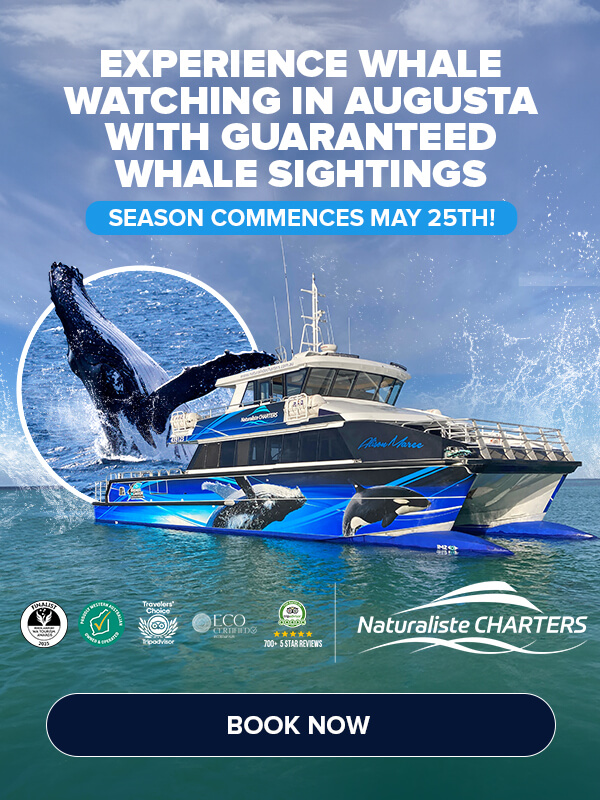Whale Watching: the complete how to guide!
Whale watching is a marine eco-tourism industry which is ever-growing in popularity. The laid back ocean experience hosts tourists from around the world during our winter months when the migrating whales visit the Western Australian coastline. From May to November great whales can be spotted not too far from the shore as they make their annual migration to northern warmer waters and then back to their feeding grounds in the south.
When whale watching, it helps to know where the animals are going to be! Sometimes they are in very close to shore in Dunsborough and Busselton, other times they can be further out in Geographe Bay. The best way to get an up-close experience is to head out on a whale watching charter. These ocean leviathans do not sit still, they are continually on the move, even while asleep! When you are on a boat, you can move along with the animals which ensures you get the best viewing experience!
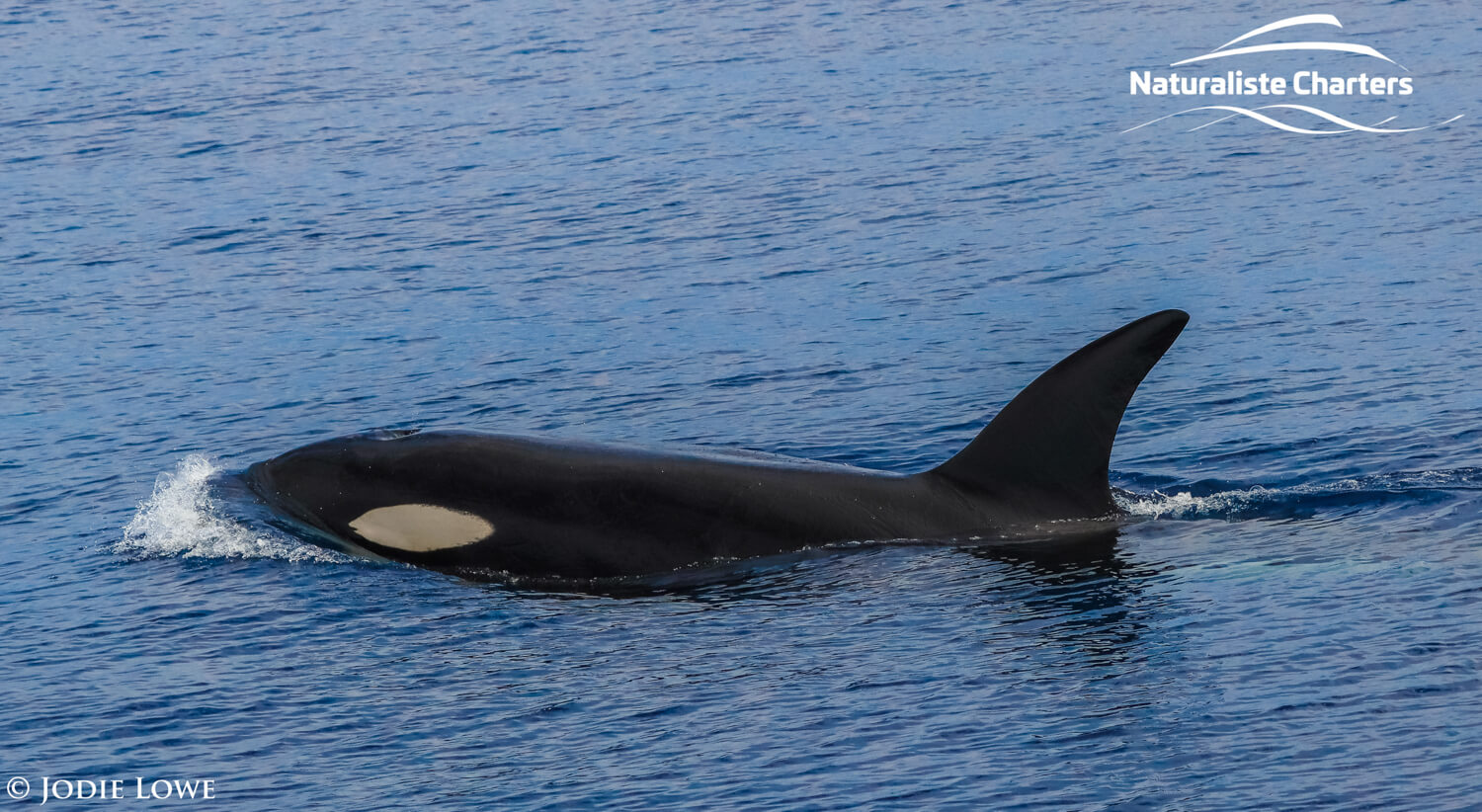
How do whale watching boats find whales?
Have you ever thought about how whale watching boats even find whales?! The answer is quite simple, by spotting! Using the greatest technology we have – our eyes.
Whale watching operators have an experienced crew on board who knows exactly what to look for and what areas to search. This blog post will break it down so that even the most amateur whale watcher will know how to find their target species.
When looking for whales in Geographe Bay and other areas along the WA coastline there are a number of different features to look for.
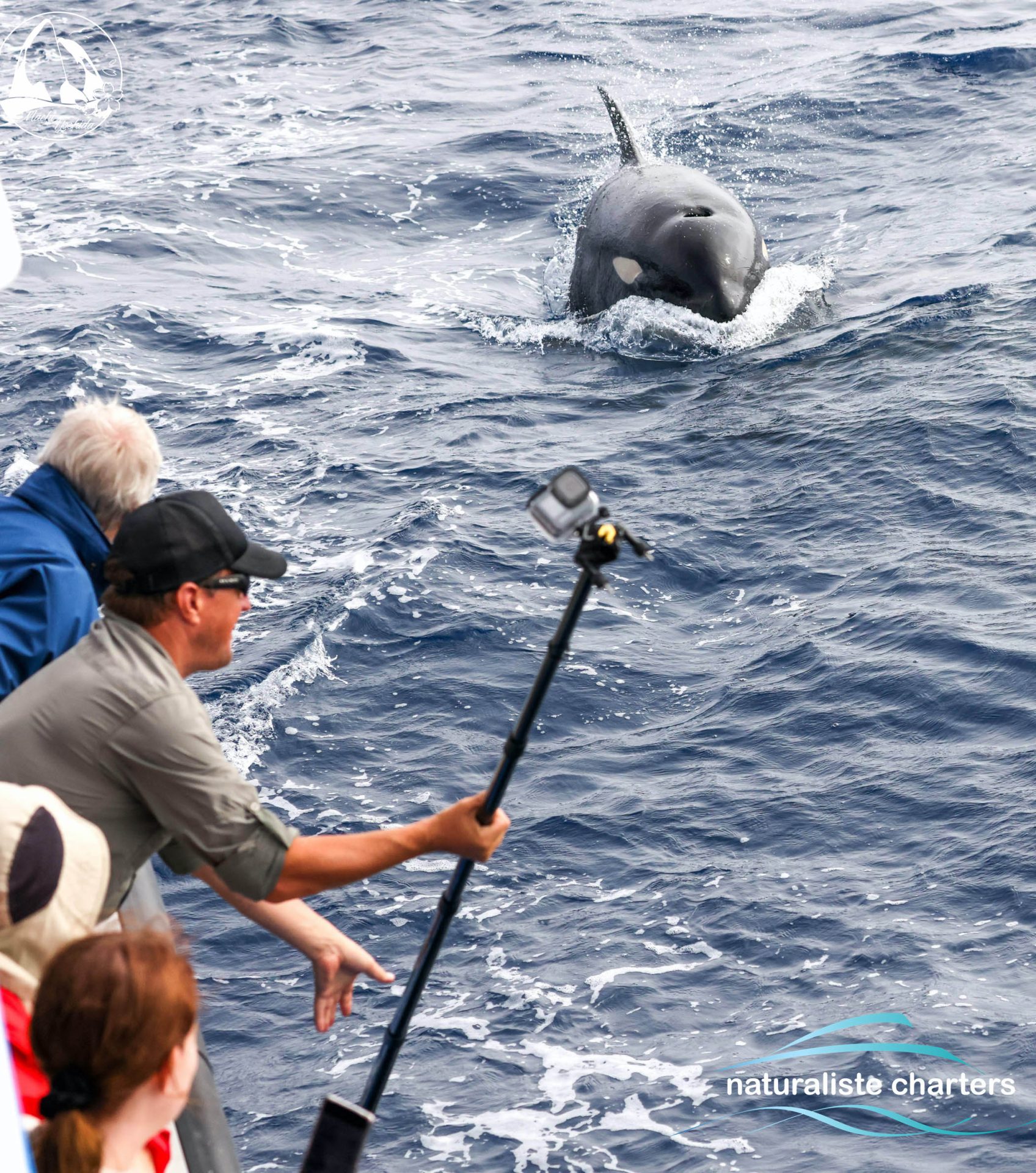
Spouts/blows
Whales are mammals which means they breathe air! They have to come to the surface to do this, and because they are so big, they exhale their big lungs very quickly. At 720km/hr, in fact – twice as fast as a jet plane taking off. Due to the high speed and volume, the warm air from the lungs condensates quickly in the cool air above, leaving a plume-like shape of mist. Sometimes there is even whale snot in this blow.
Each species of whale will have a slightly different shaped spout, which means the experienced eye can detect the type of species from a mile away!
Footprints
These are silky, calm patches of water which are left behind once a whale dives. The scientific reason is an upwelling caused by the downward motion of the whale’s fluke, or in plain English – the whale kicks its tail and pushes water to the surface. These footprints can be large or small depending on the size of the whale. Usually the whale is 40-50m in front of its last print!
Fins and Flippers
Most whales may raise their tail up from time to time, and although only very brief, it is one feature to look for. Humpbacks, on the other hand, have elongated pectoral flippers which make for a great feature to find the whales. These pectoral flippers can be up to 5m long and weigh up to about 1 tonne! Most will be white on the underside and dark blue on top, which looks like a big white flag waiting.
Backs and splashes
When whales come up they move the surface water away which causes small white ripples. These can be spotted from a distance on calm days. Breaching and surface active whales will leave large white splashes which can be easily seen from a distance, and even on rough sea days.
Communication with researchers and other ocean users
Here at Naturaliste Charters, we keep in regular communication with other boaties and those keen whale watchers who are shore-based. In Geographe Bay we have a group of regular volunteers who are researching the whale population from the shore. We stay in contact with these whale frothers who let us know what’s happening close to the coastline.
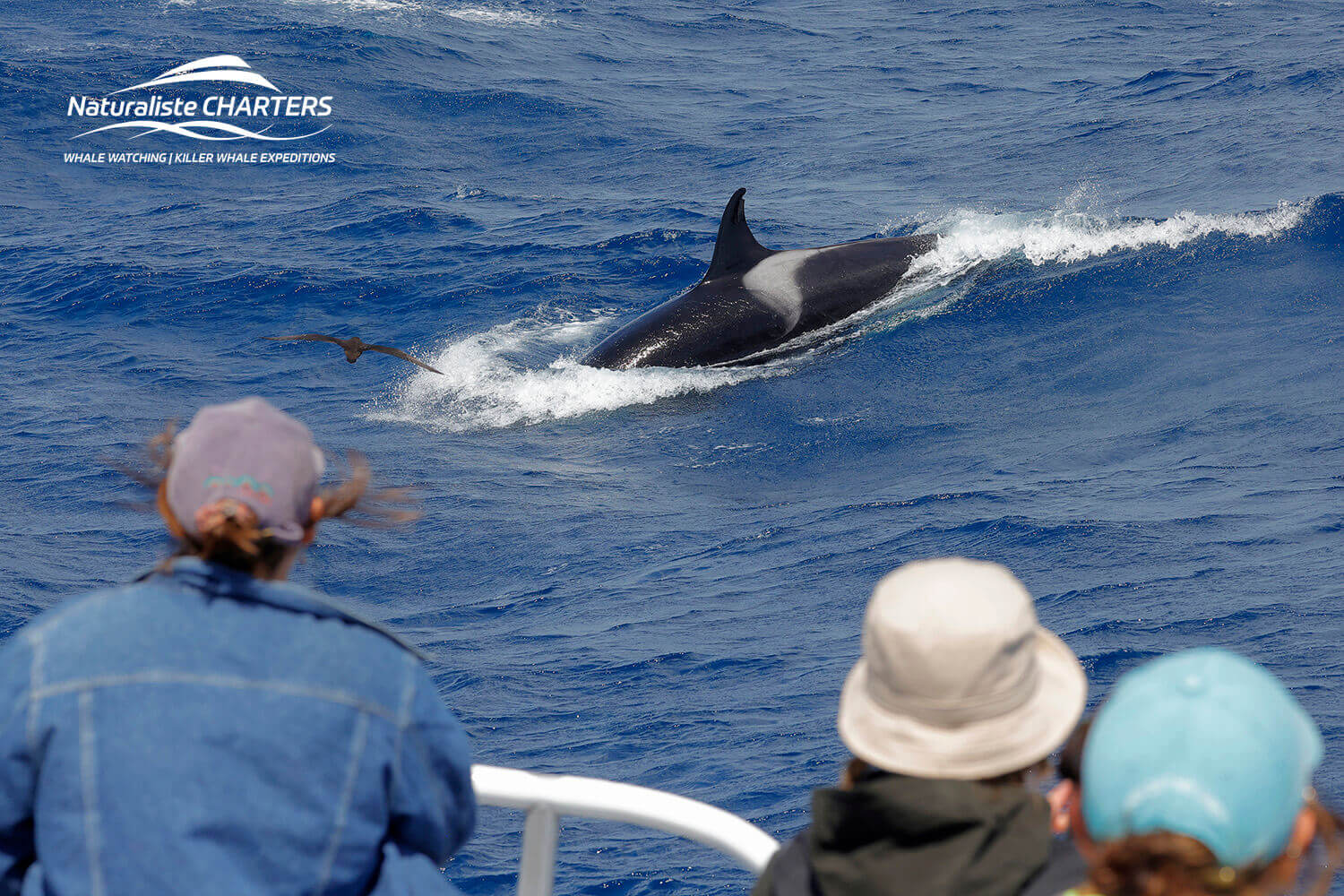
Methods we do not use
It may not be common knowledge how whale watching boats find whales, but it seems that most assume we use fancy technology or expensive aerial surveys.
Sonar and Radar
Sonar and radar are not used when whale watching! Sonar can emit nasty wavelengths underwater which may disrupt the whales and their resting in calm bays, such as Geographe Bay. Radar is designed to bounce off dense objects like metal and rock, which means that it will pass straight through the whale and leave it undetected.
Fish-finders
Most vessels will have a “fish-finder” onboard which sounds the seafloor searching for fish. Whales can show up here, however they must be swimming directly below the boat to be picked up by this technology, which is why we do not rely on this method.
Spotter plane
We also do not use any fancy aerial surveillance such as helicopters or planes. Being in a location such as Geographe Bay, means that the whales naturally pool into the shallower waters and are close to our starting position. Since whales must surface we will always be able to find them from surface and boat level. Having an eye in the sky would be an advantage however not necessary to our operation. We can find whales anywhere between 30 seconds or it may take over half an hour – but this is all a part of the wonders and fun of being on a whale watching tour!

